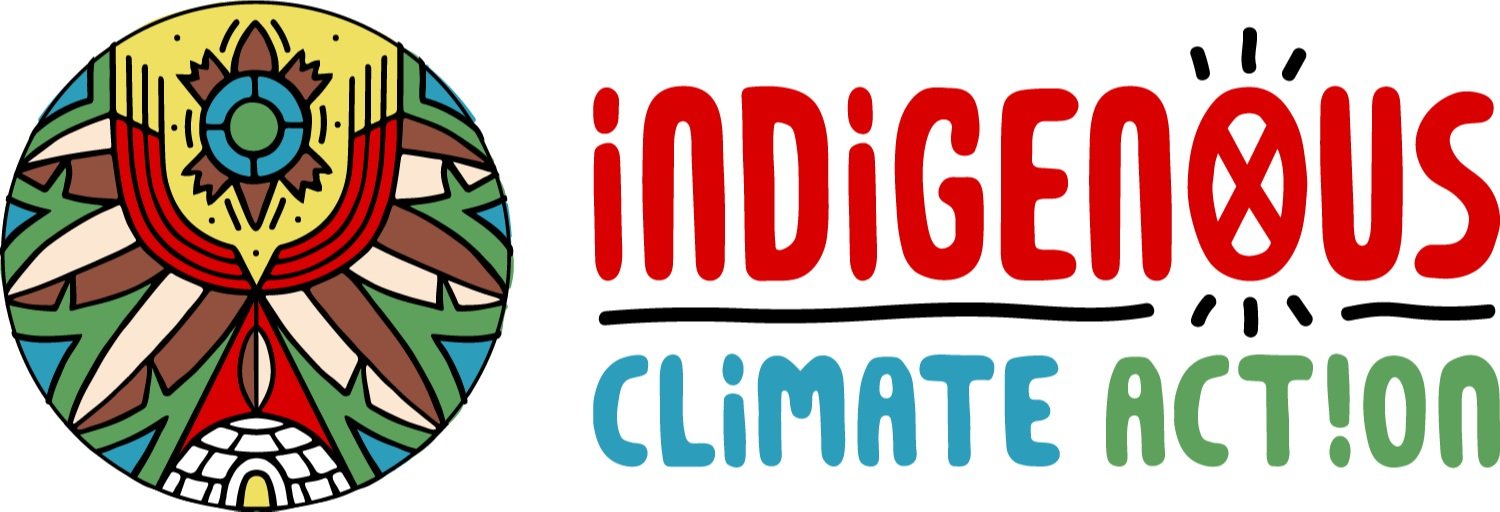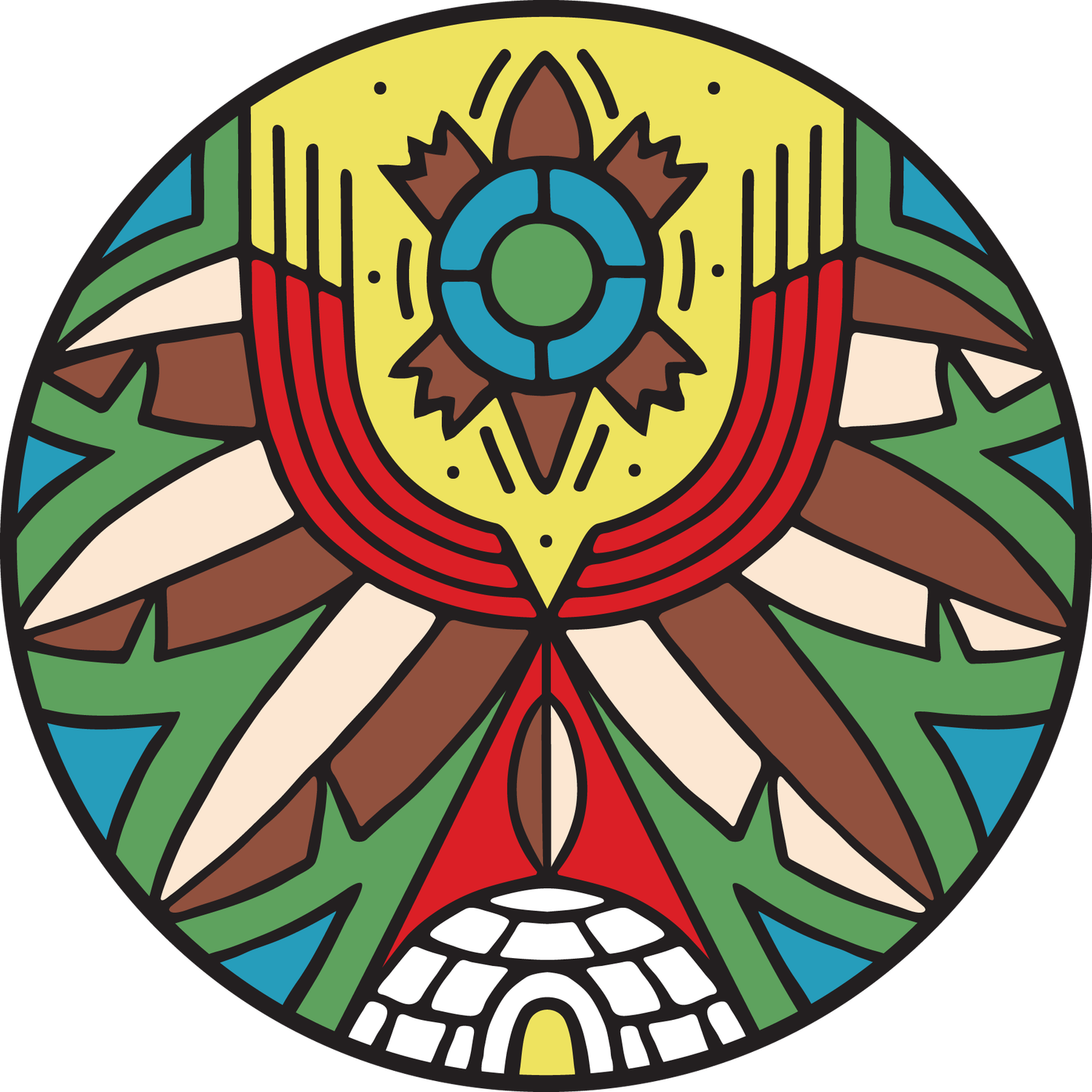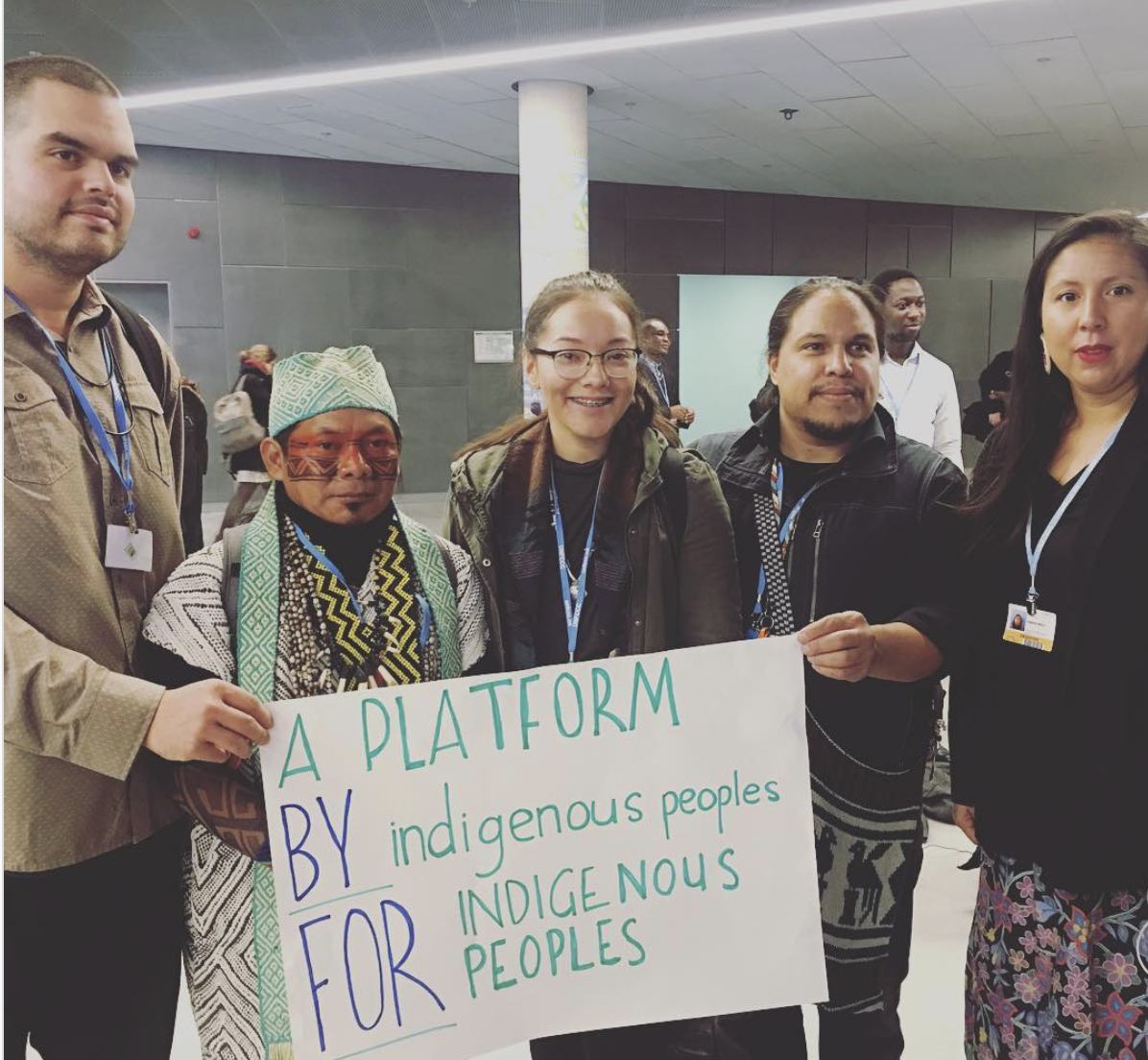ICA at the 23rd UNFCCC in Bonn, Germany
#IPCaucus action on #IPplatform at #UNFCCC
Hi all. It’s been really, really busy the last week of #COP23. Over the weekend, Friday and Saturday was spent observing the states negotiate SBSTA 47 Agenda Item 13 on Local Communities and Indigenous Peoples platform. Which also meant that the Indigenous Peoples Caucus was meeting and debating the different proposals for structure.
A quick review, as of Friday last week the #IPPlatform was moving very slowly. Countries/States were negotiating three things:
Process from now to the implementation of the platform
Structure of the platform
Purpose and procedures of the platform.
That might sound super simple, but everything slows down when the states don’t have a clear starting point, which happened last week until the G77+China proposed text. As referred to in others posts. Then it was the cart before the horse debates, whether to debate structure without procedures, procedures without purpose and intent. Finally, things started moving forward on Friday, Saturday and behind the scenes on Sunday. However, we worked until 10:30pm, 11:30pm with caucus check-ins after. This made for very long days.
For the IP Caucus internally, we had a hard time agreeing to our own lobbying text or position. These debates took most of the first whole weeks discussion time with very few resolutions. Finally, we had a break through when the countries/states ask for our position then we were forced to respond and agree. We agreed on the following principles, not input into the ,text for the G77+China proposal:
Full and effective participation of Indigenous Peoples;
Equal status and representation of Indigenous Peoples and Parties, including in leadership roles;
Self-selection of Indigenous’ representatives in accordance with Indigenous Peoples’ own procedures;
Adequate funding from the UNFCCC Secretariat and voluntary contributions to enable the aforementioned functions
The platform must also be within the UNFCCC framework, allowing it to inform decision-making and actions at national, regional, and international levels.
We came into this new week with a clear path forward but some pretty drastic holes in terms of what we agreed to as Indigenous peoples. Even internally, we had debates. One of our debates was the ad-hoc open ended working group or the expert group to work on the creation and implementation of the platform. Lucky for us, we had a lawyer and several of our own IP experts put together a slide show for us on the merits of different structures. Ideally, we wanted a structure that gave us power to self-determine our participation and input. Which are different things at this level. Participation and input on equal footing as states is our bottom line that everyone agreed on.
This slide depicts the different proposed structures that IP Caucus was debating
This slide shows the structural options vs the agreed principles by the IP Caucus
So, as you can see there are several options that we were discussing. All have different process, procedures and placement within the UNFCCC. As the IP Caucus we are trying to hold space in the negotiations for IP’s Knowledge to inform on any parts of the Paris Agreement implementation and overall work. We understand that way we live is a climate solution-period. The platform could help show the world how to have a better relationship with the land and also use this way of thinking to hold the larger work of the Paris Agreement to account. That’s really important. Especially through the negotiations states keep reiterating their commitment to Indigenous Peoples and the unique role Indigenous stewardship plays.
The reason there were so many late-night meetings over the weekend was due to the deadline that the SBSTA chair had mandated for this agenda item. Our deadline was to have the text finished over the weekend for submission to the Chair on Monday. This meant that anything in brackets was un-agreed upon by the states and would remain in the document for further negotiation which was exactly what no one wanted. The states/countries, the Presidency and the Secretariat had all envisioned that the draft text would be finished by Friday.
inktomilady
Guess where I am? Haha! 8:22pm plus morning to mid afternoon meetings! The UN never sleeps! Ugh, but I want to one day (insert puppy dog face) #UN #COP23
On Friday, most of the document/text was bracketed. One of the states had proposed that the platform be a web-portal which was exactly what we didn’t want. So, we all went into the extended weekend negotiations with hope that the states would include our principles and that the text could be finalized in draft format by the SBSTA Chair’s deadline.
By Monday when the deadline approached. The text/document still had many holes and the principles the IP Caucus had proposed were still missing. The meeting was closed. I think we felt defeated to be honest. It takes a lot to sit there and “observe” the dance that countries do with each other on things that matter to our people but we have no say, little point of intervention. We can lobby our countries, and other states. But at the end of the day the text in the document is negotiated by them.
We all huddled after the meeting closed and states/countries left. We agreed that we won very little. We decided to organize an action in the main entrance of the Bula zone to send a message to Ministers of the Countries, “Nothing about us, without us,” and “Our rights are not up for negotiation.” The reason we wanted to target the Ministers of the States/Parties/Countries, is because of the process the text now would go through. First, the co-facilitators would report back to the SBSTA Chair with text. Then the Chair would make a recommendation to the Presidency. From there because the text still needed to be negotiated the Presidency could recommend that the Ministers do the final negotiations. So we assumed that the Ministers negotiations would be the next step in the process. That means for the IP Caucus that we would be restricted from the negotiations and they would most likely be done the weekend or days after the COP. We would all be gone as well. This scenario was one that no one was excited about. Hence the “Nothing about us, without us.”
The second thing we agreed to do was try and organize a press conference from the IP Caucus. Third, we agreed to open our day the next day with a ceremony and prayer just outside the Bula zone since smudge isn’t something that is allowed inside the negotiations.
The day started with a smudge and prayer ceremony led by Francois Paulette. Then we all moved inside the main entrance area and began our IP Caucus action. On a side note, an action that happens inside the UN buildings must go through a permitting process and be approved by the secretariat. The tactical scale of actions inside the UN is very low, you can’t use sound amplifiers, or loud sounds like chanting, burn flags and the list goes on. Its written into the permit. There have been actions at several COP’s in the past were people have been kicked out and lost their organizational accreditation. That’s the risk of doing actions in a place like this. On the other hand, the IP Caucus starting doing actions at the Copenhagen COP. It took a bit of convincing but soon people began to understand that the actions attracted global media, the attention of many states and organizations. Since that time, we have used the permitted actions as ways to amplify our messages, and sound the alarm when our rights were being lost in the negotiations. Many times, our actions are Indigenous Peoples singing, speaking out and we make simple banners as visuals with our messages and take time to speak to the media.
One of the Indigenous delegates from Asia region at the IP Caucus action in the Bula zone
(The IP Caucus Action organized by the Pacific youth delegates!)
Just after the action happened inside the #COP23 the Chair called a meeting on SBSTA Agenda Item 13. I didn’t get to participate as I had another event at the time. The SBSTA Chair called all the countries back to negotiating table and gave them a new deadline for later that evening at 8pm to have a non-bracketed text/document. We all know that Fiji is a small island state and its existence is threatened by climate change, but Fiji’s people are Indigenous for the most part. The Presidency used significant political capital to bring everyone back to further negotiate. I got back to the UN about 5 or 6pm that evening to see that the IP Caucus was happy with the outcomes of the Chairs move. And very thankful to be honest. This gave us one last chance to try to get a stronger outcome for our people.
We still had a lot of work to do. In previous interventions that day, our position was made clear that the IP Caucus principles must be upheld for us to move forward. No compromise. As time went on there were several proposals that different countries refused to let go. You could see the negotiators huddled together trying to figure out a way forward. Other times it was us as a caucus debating which paragraphs we could live with. It was a long evening. Never the less by 7:30pm we had moved from debating the text to a final go through of the text by the co-facilitator.
(From inside the negotiations called for by the SBSTA chair)
By 8pm, almost every bracket had been removed. At this point, the co-facilitator took the final text/document to the SBSTA Chair with good news that the draft was finished. The Chair responded that they would have their legal team review it before finalizing the text officially as a draft. This meant that this version after legal review was final. We had a final draft text for submission. I think it was closer to 10pm when the SBSTA Chair came back to officially accept the document on the record. We took pictures and honestly everyone was relieved after 9 days of negotiations we finally had something concrete. Even the negotiators were relieved.
(Chair moving us through the final document)
(Final draft text on Local Communities and Indigenous Peoples Platform)
On Wednesday, the SBSTA closing plenary happened through-out the day. You can watch the on-demand recording here:
https://unfccc.cloud.streamworld.de/webcast/sbsta-closing-plenary-part-ii
which includes Hindu our chair of the IP Caucus at the #COP23 make closing statements on behalf of the caucus on the plenary floor. The plenaries are higher level sessions with participation of the all of the states in attendance. On a side note, Hindu was elected by the IP Caucus to chair our meeting in the first session, at the first session people are put forward to chair and we vote. It’s a big job to try and move global consensus yet still keep to the agenda time. This was also why the deadline was important. The Chair of SBSTA has to report back to all the countries, and everyone was expecting that the platform was movable during this COP.
(The Assembly of First Nations is one of the five official Indigenous Political Organizations accredited to participate in the 23rd UNFCC or #COP23 by the Canadian Government)
Generally, this was a win for the IP Caucus. As Alberto Saldamando from the Indigenous Environmental Network has said, ”This is the path or roadway forward, however the road is very narrow.” Which is a good analogy. We have an agreement to move forward on the platform, at the next meeting in six months; there is still room to continue to negotiate for more of the principles to be included; but the confines are narrow. We just don’t have a lot of room to work within.
You can find the final draft of the SBSTA 47 Agenda Item 13 here:
http://unfccc.int/resource/docs/2017/sbsta/eng/l29.pdf
More to come…






